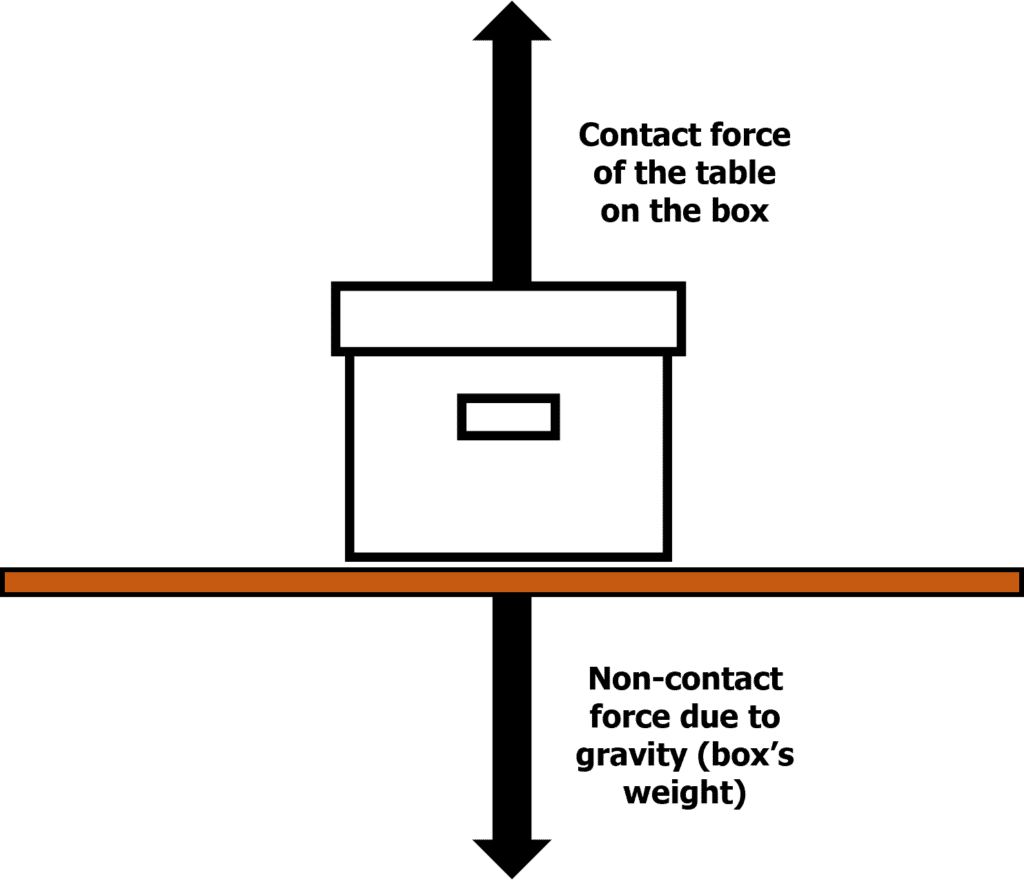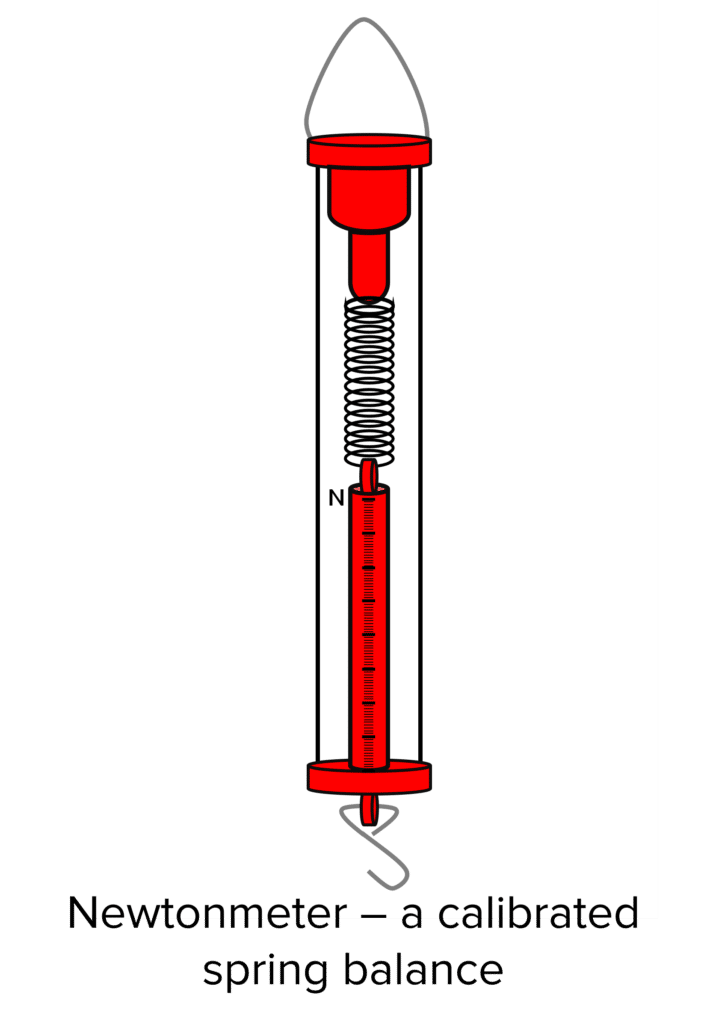Types of Forces
Types of Forces Revision
Types of Forces
A force is a push or a pull acting on an object as a result of an interaction with another object. There are different types of forces that can act on an objects. A force can either be contact (i.e friction) or non-contact (i.e gravitational force).
Scalars and Vectors
A scalar quantity has magnitude (size) but no direction. Some examples are mass, temperature and distance.
A vector quantity has magnitude and direction. Some examples are velocity and displacement.
Vectors can be represented by an arrow. The length of the arrow represents the magnitude of the vector and the direction of the arrow represents the direction of the vector.
Force is a vector quantity. For example, a force could have a magnitude of 10 \: \text{N} and act to the left.
Contact vs Non-Contact Forces

A force is a push or a pull acting on an object. This push or pull is due to an interaction with another object. All forces between objects are either contact or non-contact:
- Contact forces – when the two objects interacting have to be physically touching for there to be a force. Examples: air resistance, tension, friction and normal contact force.
- Non-Contact forces – when the two objects do not have to be touching. Examples: magnetic force, gravitational force, electrostatic force.
When a pair of objects interact, there is a force produced on each object. These forces are equal and opposite (by Newton’s 3rd law).
Gravity

An object’s mass is measured in kilograms. Weight is different than mass. Weight is the force acting on an object because of gravity. Mass is always the same everywhere, but weight can change depending on how strong the gravitational field is.
Weight is measured in Newtons, because it is a force. Weight can be measured with a newtonmeter, which is a calibrated spring balance.
Weight depends on the mass of the object, and how strong the gravitational field is. You can calculate the weight of an object by using the following formula:
\textcolor{00bfa8}{W = m \times g}
- \textcolor{00bfa8}{W} is the weight in Newtons, \left(\text{N}\right).
- \textcolor{00bfa8}{m} is the mass in kilograms, \left(\text{kg}\right).
- \textcolor{00bfa8}{g} is the acceleration due to gravity in newtons per kilogram, \left(\text{N/kg}\right).
- The acceleration due to gravity, \textcolor{00bfa8}{g}, on earth is constant at \textcolor{00bfa8}{g = 9.8 \: \text{N/kg} }.
From this equation we can see that weight and mass are directly proportional. So if the mass increases, the weight increases (as long as \textcolor{00bfa8}{g} is constant).
We can consider an object’s mass to all act at a single point. This point is called the centre of mass.
Types of Forces Example Questions
Question 1: Is speed a scalar or a vector? Explain your answer.
[2 marks]
Scalar because it only has a magnitude.
Question 2: A box has a weight of 10 \: \text{N}. Calculate the mass of the box.
The strength of the gravitational field is 9.8 \: \text{N/kg} .
[3 marks]
\bold{m =\dfrac{W}{g}}
\bold{m =\dfrac{10}{9.8}}
\bold{m = 1.02} \: \textbf{kg} \text{ (2 sf)}
Question 3: State what piece of equipment would be used to measure the weight of an object.
[1 mark]
A newtonmeter.





